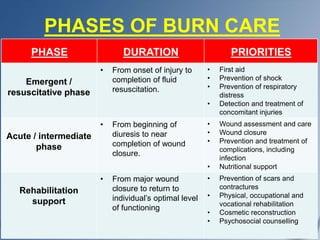A 30-year-old African American had surgery 6 months ago and the incision site is now raised, indurated, and shiny. This is most likely which type of tissue growth?
Melanoma
Keloid
Nevus
Angioma
The Correct Answer is B
A. Melanoma:
Melanoma is a type of skin cancer that arises from melanocytes, the cells that produce pigment (melanin) in the skin. Melanoma lesions are typically irregularly shaped, often asymmetrical, with varying shades of color (brown, black, tan, red, blue). They may have an uneven border and can evolve over time. Melanomas can be raised but are not typically described as indurated (firm) and shiny. They are also more commonly associated with changes in color, size, and shape.
B. Keloid:
A keloid is an abnormal overgrowth of scar tissue that extends beyond the boundaries of the original wound or incision site. Keloids are characterized by their raised appearance, firm or indurated texture, and shiny surface compared to the surrounding skin. They may also be darker than the surrounding skin due to increased collagen deposition. Keloids can develop months after an injury or surgery and are more common in individuals with darker skin tones, such as African Americans.
C. Nevus:
A nevus, commonly known as a mole or birthmark, is a benign growth of melanocytes or other skin cells. Nevus lesions can vary in appearance but are often flat or slightly raised, with a uniform color (brown, black, tan, or flesh-colored). They are usually not described as indurated or shiny. Nevus lesions can be present at birth (congenital nevus) or develop later in life (acquired nevus).
D. Angioma:
Angiomas are benign tumors that originate from blood vessels or lymphatic vessels. They can present as red or purplish raised lesions on the skin. Angiomas are typically not described as indurated or shiny. Common types of angiomas include cherry angiomas (small, red papules) and spider angiomas (red, spider-like lesions with central vessels).
Nursing Test Bank
Naxlex Comprehensive Predictor Exams
Related Questions
Correct Answer is D
Explanation
A. Cardiac arrest related to septic shock:
Septic shock can occur in burn patients due to the breakdown of the skin barrier, which allows pathogens to enter the bloodstream and cause systemic infection. However, while septic shock is a serious complication of burn injuries, it is not the primary cause of death in the emergent phase. Septic shock can lead to multiple organ failure and contribute to mortality, but it is often a later complication rather than an immediate cause in the emergent phase.
B. Infection:
Infections are a significant concern in burn patients, especially as the burn wound provides an ideal environment for bacterial growth. However, infections typically contribute more significantly to mortality in the later phases of burn care rather than in the emergent phase. In the emergent phase, hypovolemic shock and other immediate complications have a greater impact on mortality.
C. Adrenal failure:
Adrenal failure, specifically acute adrenal insufficiency or Addisonian crisis, can occur in burn patients due to the stress response and corticosteroid depletion. While adrenal insufficiency is a concern in severe burn cases, it is not the primary cause of death in the emergent phase requiring referral to a burn center.
D. Hypovolemic shock and renal failure:
Hypovolemic shock is a critical concern in the emergent phase of burn trauma because burns can lead to significant fluid loss and electrolyte imbalances. Hypovolemic shock results from insufficient circulating blood volume, leading to inadequate perfusion of organs and tissues, which can be life-threatening. Additionally, renal failure can develop due to hypovolemia, decreased cardiac output, and the release of inflammatory mediators, leading to acute kidney injury (AKI). Hypovolemic shock and subsequent renal failure are major contributors to mortality in the emergent phase of burn trauma, necessitating prompt referral to a burn center for specialized care.

Correct Answer is C
Explanation
A. “Call your surgeon if you have any questions at home.”
This instruction is important as it encourages the patient to seek help and clarification if they have any concerns or questions about their postoperative care at home. However, while communication with the surgeon is essential, it is not as immediately critical as ensuring proper hand hygiene when dealing with wound care and drain management.
B. ”Eat a diet high in protein, iron, zinc, and vitamin C.”
Nutritional advice is crucial for postoperative recovery, as a balanced diet high in protein, iron, zinc, and vitamin C can promote wound healing and overall recovery. However, while important for long-term recovery and healing, dietary recommendations do not directly address the immediate risk of infection or complications associated with wound care and drain management.
C. “Wash your hands before touching the drain or dressing."
This instruction is the most important in this context because proper hand hygiene is crucial for preventing infections during wound care and drain management. Clean hands significantly reduce the risk of introducing harmful bacteria or contaminants to the surgical site, which can lead to infections and other complications. Ensuring that the patient washes their hands before touching the drain or dressing is a fundamental measure for promoting wound healing and preventing postoperative complications.
D. “Be sure you keep all your postoperative appointments.”
Keeping postoperative appointments is important for ongoing assessment, monitoring, and follow-up care. However, while essential for overall recovery and management of postoperative issues, it is not as immediate or directly related to the patient's ability to manage their dressing and drain at home.
Whether you are a student looking to ace your exams or a practicing nurse seeking to enhance your expertise , our nursing education contents will empower you with the confidence and competence to make a difference in the lives of patients and become a respected leader in the healthcare field.
Visit Naxlex, invest in your future and unlock endless possibilities with our unparalleled nursing education contents today
Report Wrong Answer on the Current Question
Do you disagree with the answer? If yes, what is your expected answer? Explain.
Kindly be descriptive with the issue you are facing.
